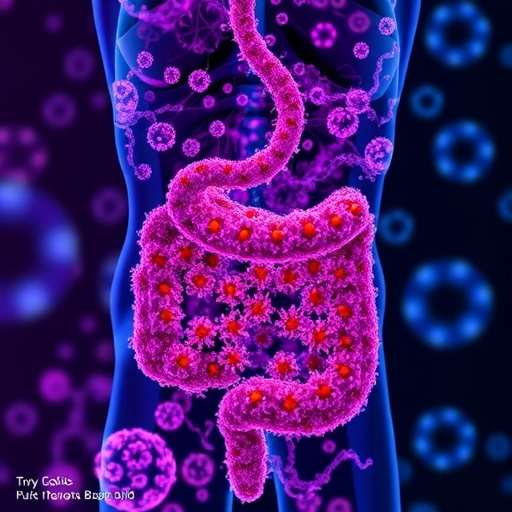Association found between omega-6:omega-3 ratio in the umbilical cord and the appearance of ADHD symptoms
The results of a study led by a team from the Barcelona Institute for Global Health (ISGlobal), a centre supported by “la Caixa”, suggest that the risk of a child developing symptoms of attention deficit hyperactivity disorder (ADHD) may be modulated by the mother’s diet during pregnancy. The study, published in the Journal of Pediatrics, analysed samples of umbilical cord plasma to quantify the levels of omega-6 and omega-3 that reach the foetus. The statistical analysis showed a higher omega-6:omega-3 ratio to be associated with a higher risk of ADHD symptoms at seven years of age.
Omega-6 and omega-3 are long-chain polyunsaturated fatty acids that play a crucial role in the function and architecture of the central nervous system, particularly during the later stages of gestation. These two fatty acids compete for incorporation into cell membranes and are primarily obtained through diet. Since omega-6 and omega-3 have opposing physiological functions–the former promotes systemic pro-inflammatory states, while the latter promotes anti-inflammatory states–a balanced intake of these two fatty acids is important. Previous research had shown that children with ADHD symptoms have a higher omega-6:omega-3 ratio.
The authors studied data from 600 children living in four Spanish regions (Asturias, Basque Country, Catalonia and Valencia) who are participating in the INMA Project. They analysed umbilical cord plasma samples and data from questionnaires completed by the children’s mothers. ADHD symptoms were assessed using two standard questionnaires: the first completed by the children’s teachers at age four years, and the second by their parents at age seven years.
The results showed that, at age seven years, the number of ADHD symptoms increased by 13% per each unit increase in the omega-6:omega-3 ratio in umbilical cord plasma. The study analysed the number of symptoms in the children who met the diagnostic criteria for ADHD (minimum six symptoms) and also in the children with a smaller number of ADHD symptoms. The ratio of the two fatty acids was associated with the number of ADHD symptoms present but not with diagnosis of the disorder, and only in the assessment carried out at seven years of age. The authors suggest that the assessment carried out at four years of age may have been affected by a measurement error because ADHD symptoms reported at early ages may be caused by a neurodevelopmental delay falling within the normal range.
“Our findings are in line with previous studies that established a relationship between the omega-6:omega-3 ratio in mothers and various early neurodevelopmental outcomes,” commented Mónica López-Vicente, ISGlobal researcher and lead author of the study.
“Although the association was not clinically significant, our findings are important at the level of the population as a whole,” noted López-Vicente. “If a large proportion of the population is exposed to a high omega-6:omega-3 ratio, the distribution for ADHD symptom scores would likely move to the right and the prevalence of extreme values would increase, leading to a negative impact on the community’s health costs and productivity.”
“This study adds more evidence to the growing body of research on the importance of maternal diet during pregnancy,” commented ISGlobal researcher Jordi Júlvez, a co-author of the study. “The nutrient supply during the earliest stages of life is essential in that it programs the structure and function of the organs, and this programming, in turn, has an impact on health at every stage of life. As the brain takes a long time to develop, it is particularly vulnerable to misprogramming. Alterations of this sort could therefore lead to neurodevelopmental disorders.”
###
Reference
Mónica López-Vicente, Núria Ribas Fitó, Natalia Vilor-Tejedor, Raquel Garcia-Esteban, Sílvia Fernández-Barrés, Payam Dadvand, Mario Murcia, Marisa Rebagliato, Jesús Ibarluzea, Aitana Lertxundi, Ana Fernández-Somoano, Adonina Tardón, M. Carmen López-Sabater, Dora Romaguera, Martine Vrijheid, Jordi Sunyer, Jordi Julvez. Prenatal omega-6:omega-3 ratio and attention deficit and hyperactivity disorder symptoms, the Journal of Pediatrics, 2019.
About ISGlobal
The Barcelona Institute of Global Health (ISGlobal) is the result of an innovative alliance between academic and public institutions and “la Caixa”. The Institute was set up to contribute to the efforts of the international community to address health challenges in a globalised world. ISGlobal has consolidated a hub of excellence in research and medical care that has its roots in work first started in the world of health care by the Hospital Clínic and the Mar Health Park and in the academic sphere by the University of Barcelona and Pompeu Fabra University. The pivotal mechanism of its work model is the transfer of knowledge generated by scientific research to practice, a task undertaken by the Institute’s Education, Policy and Global Development departments. ISGlobal is a member of CERCA, the Catalan Government’s network of research centres.
Media Contact
Pau Rubio
[email protected]




